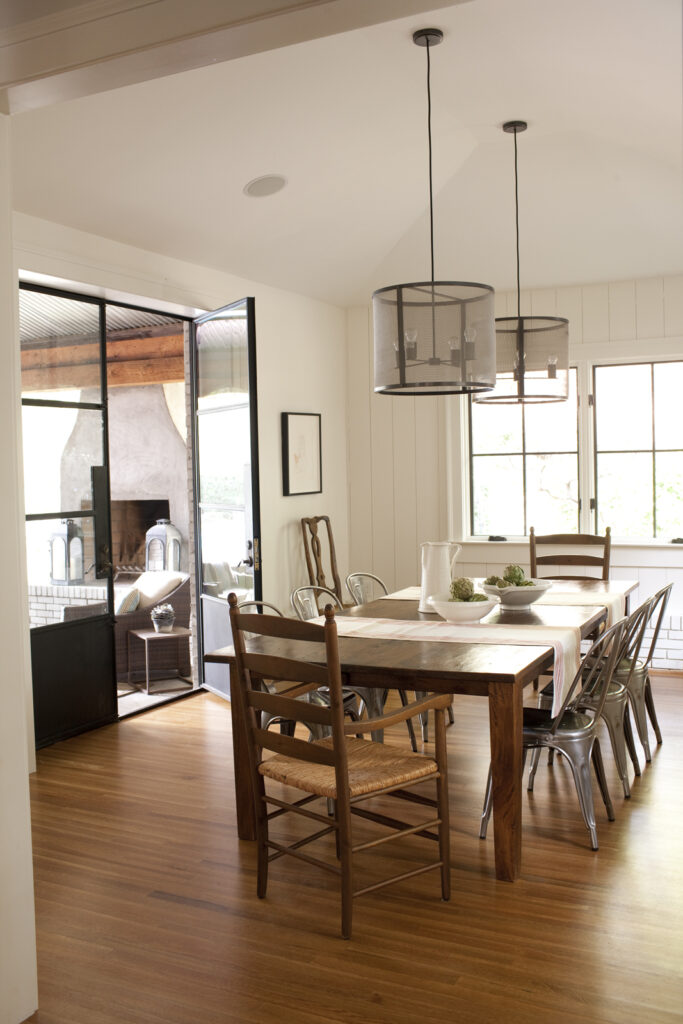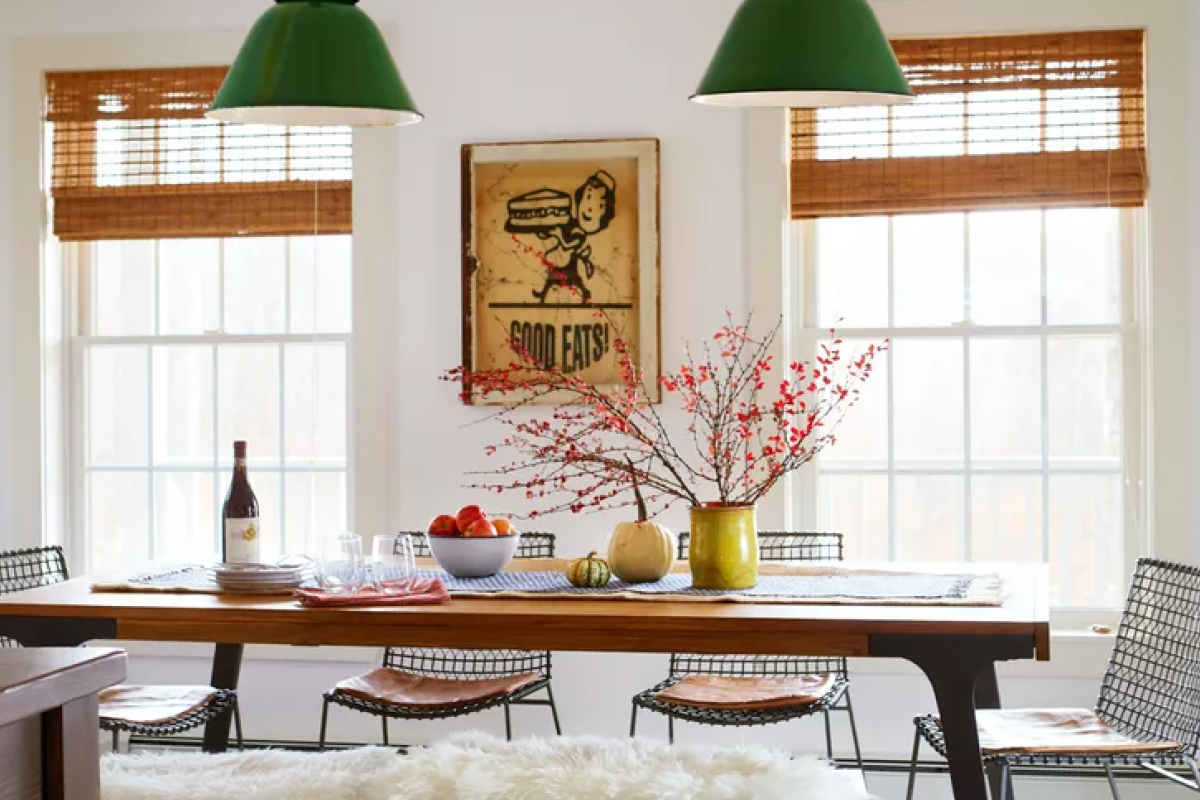It’s hard to resist finishing everything (and fast) when decorating, particularly when repurposing a room, embarking on a design refresh or moving into a bigger place. And it can be especially challenging for someone starting with a lot of blank walls or empty floor space. It might seem easy to outfit your place with cheaper (and often poorer-quality) items to have a finished home fast, but there are many reasons to take your time instead. Slow decorating is a home design trend built on mindfully choosing items to bring into your home and counteracting the push for a quick finish in favor of pieces you’ll be able to live with forever.
What is slow decorating?

“Slow decorating is the process of taking your time to curate the perfect space for yourself,” says New York-based interior designer Amy Baratta. Slow decorating is not about completing your home right away but allowing time to get to know the spaces you live in and determine your own style. While “slow” can easily refer to the speed of decorating, it also alludes to the greater intention and purpose behind acquiring pieces for your home. According to Baratta, slow decorating recognizes that style and spaces evolve over time, so it encourages homeowners to invest in pieces they’ll want to keep and continue to use.
Slow decorating is similar to the slow fashion movement: it’s about quality over quantity, focused on purchasing better-quality products instead of mass-produced materials that are easily damaged, worn down and generally thought of as disposable.
It’s also an eco-conscious endeavor. Buying high-quality products results in less being thrown out or replaced. Slow decorating encourages finding antiques, buying used but quality items and updating older pieces for continued use. It involves purchasing products that are not only made of sustainable materials but also come from environmentally friendly processes and eco-conscious businesses.
Benefits of slow decorating
“When you purchase with intention, you have a stronger connection to the items in your home,” says Baratta. There’s an authenticity to slow decorating that can’t be rivaled, but that’s just one of the many benefits of slow decorating.
Less pressure
Slow decorating eliminates the pressure to get things completed quickly, while also removing the push to determine a single decorating style. Allowing time to develop and understand your personal style will help you feel more confident decorating your home, even if it’s not your strong suit. By taking time to decorate, “you can alleviate any self-imposed pressure of trying to perfect a room overnight,” says designer Jewel Marlowe of Jeweled Interiors.
Time for budgeting
“Slow decorating allows you to build up cash flow between purchases, so you can invest in quality pieces rather than trying to stretch your budget to purchase everything at once,” says Lindsey Putzier, owner and principal designer at Lindsey’s Eclectic Interiors. Although your purchases might be more expensive, the tradeoff is that you can budget for them. Plus, you might end up spending less buying pieces that will last rather than replacing easily outdated or damaged items.
Trend-proof style
Maybe the biggest perk of slow decorating is that it’s an effortless way to trend-proof your home. “Thoughtfully collecting items results in a more timeless aesthetic,” says Putzier. When your style isn’t tailored to one trend, it’s easier to swap out items later.
Another benefit is that a mix of vintage pieces, textures and splurge items elevates the affordable, mass-market items in your home. “It is the eclectic nature and execution that deliver a high-end, more timeless look,” says Marlowe.
Top 10 tips for slow decorating

The phrase “patience is a virtue” applies to slow decorating. It might be hard to look at bare floors, use an old buffet that doesn’t fit your new home or avoid eye-catching deals from online retailers, but these tips will help you feel confident committing to more sustainable, quality purchases.
1. Start with the big pieces.
“If you are looking for new pieces for your living room, start with big items like the sofa and rug to anchor the room,” says Baratta. She says to look for something well-made with a timeless shape and style so that it can easily evolve with you. “After you have the anchor
pieces, take your time layering in smaller items, like cabinets, occasional tables and decorative lighting.”
2. Look for assembled furniture.
A good baseline for identifying quality furniture is that it comes assembled, which is less common in many big-box stores and online retailers. “Quality furniture comes already fully built,” says Putzier. “If you must build it yourself, it’s likely not going to hold up to everyday use. High-quality items cost more but they last for generations.”
3. Save and splurge.
While slow decorating encourages waiting to buy something until it’s the right fit, it’s difficult to go without hardworking pieces like a dining table, sofa or dresser. But you likely can’t fork over a lot of money on multiple pieces all at once, either. “Splurge on something epic—maybe your sofa, table or bed—and shop smart on the rest,” says Marlowe. “Then, as you find treasures along the way, you can upgrade.” Marlowe recommends asking yourself if the item you want to purchase is a “forever buy” or a “huge improvement for now” to help determine how to spend money.
Marlowe also suggests considering life stages when deciding which big purchases to make. Have children and want to avoid sticky fingers or capless markers marring a prized piece? Spend the money on items that are out of reach, like artwork or lighting. “Save the custom sofa for when kids are older,” says Marlowe. Another option is to choose used pieces over fast furniture to shop more sustainably during those in-between years.
4. Embrace mixing styles.
Your space shouldn’t reflect a catalog page from your favorite store; the look might become dated, and it’s harder to add in other elements down the road. To withstand trends and time, embrace different design styles. Baratta, for instance, paired a mid-century modern sofa with a wooden cobbler’s table in her living room. “It looks great together, and the antique table has an interesting story behind it,” says Baratta.
5. Investigate materials.
Slow decorating gives you the opportunity to really consider the materials that make up the furniture and decor in your home. In her book, Wellness by Design, wellness design consultant Jamie Gold emphasizes the importance of material choices. Does the rug in a well-used room have chemical stain protection that includes volatile organic compounds (VOCs)? Does that wood cabinet have toxic finishes that are bad for your home’s air quality or the environment?
Investigate materials before you make a purchase, or look for solutions that you know to be higher quality. Wool, for instance, is naturally hypoallergenic and can withstand wear and dirt, making it a great option for floors, upholstery and even bedding. “Wool’s biggest negative is cost,” says Gold. “But if you’re buying, decorating, building or remodeling for long-term use, it will likely pay for itself with its longevity.”
6. Really know your space.
Although good advice for anyone, it’s an especially good reminder for slow decorating: Take time to live in your space. Knowing how you want to use it—and what pieces you want to fill
it with—will slow down the drive to decorate right away. It will also help you determine what will be a good fit. “It’s easy to fall in love with a unique piece, but it must fit in your space for it to become a treasured item,” says Putzier.

7. Buy local and handmade.
“For accessories, such as vases, plates or cups, seek out local artisans that are creating handcrafted, small-batch items instead of buying from the larger stores,” suggests Baratta. “Look for shops that carry one-of-a-kind, unique pieces made by a local craftsperson. If you don’t have something like that close to you, most artists sell their goods online.”
Similarly, Putzier recommends buying art, vases, rugs and other decorative pieces from places you visit. “These pieces bring back cherished memories,” says Putzier. Unique creations might cost more, but you can feel good knowing who your money supports.
8. Shop with sustainability in mind.
Do some research before buying. “Look for companies that describe their construction process and have a sustainability program,” says Baratta. “If they do, it should be easy to locate on their website.” In addition to eco-friendly brands, Baratta suggests looking for those with a demonstrated fair-trade policy, which supports the fair pay and treatment of creators around the world.
9. Consider care and maintenance.
You’re a lot more likely to replace something that is a pain to maintain or doesn’t work the way you wanted it to. One of the objectives of slow decorating is to not have to make replacements. “When you look at stylish updates for your home, look with an eye toward practicality and purpose,” says Gold. “Will this choice make your life easier or harder? What will be involved in keeping it in good condition?” Gold says the key is being honest with yourself. You might love the look of that glass coffee table, but will you want to wipe away fingerprints regularly? Even if it’s a quality piece, it might not be right for your lifestyle.
10. Know that it’s about balance.
Not everything has to be expensive or meet these design tips. The goal of slow decorating is a livable space that fits your lifestyle and avoids treating furniture and decor like disposable items. It’s OK to incorporate some budget pieces from fast-market retailers; sometimes it’s just easier and fits your style. The key is to care for those items, as well as higher-quality pieces, so you can continue to use them for a long time.
© Meredith Operations Corporation. All rights reserved. Used with permission.


